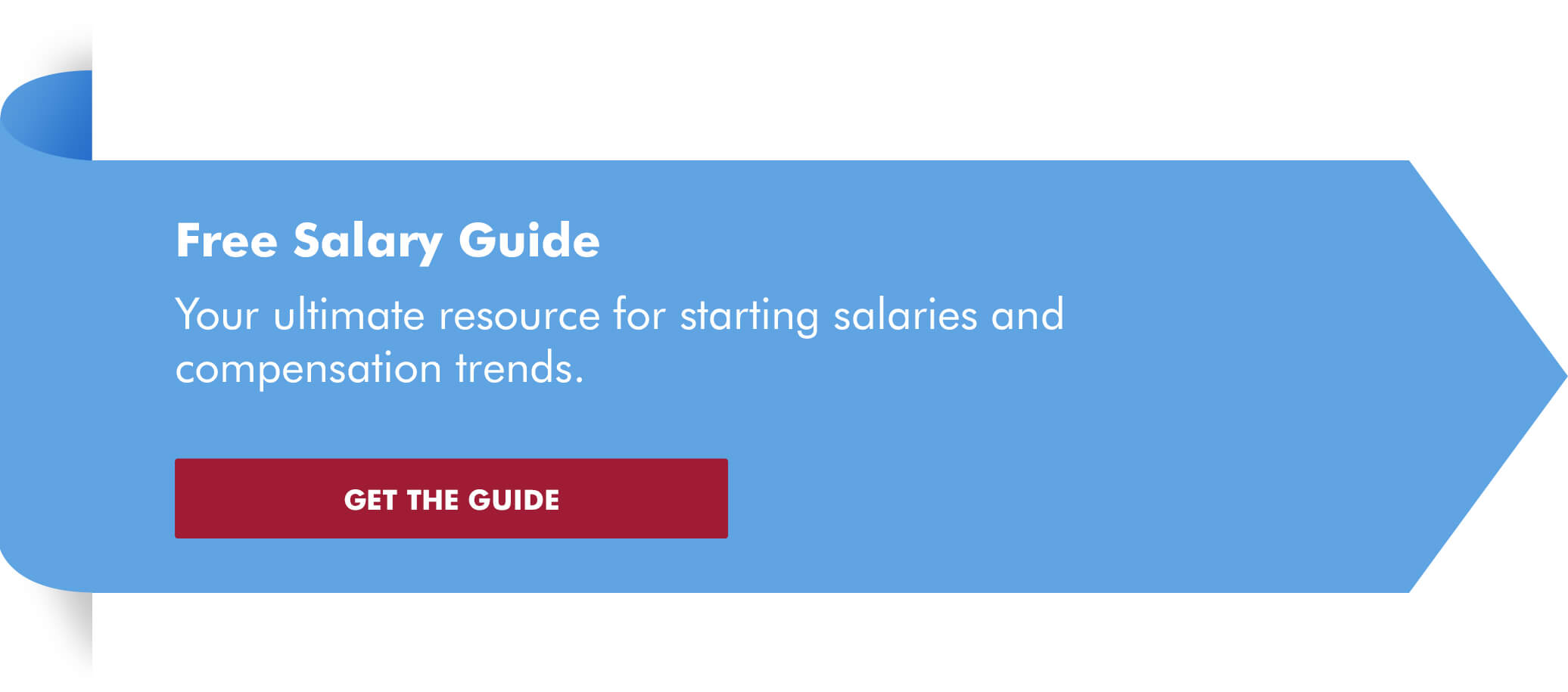While some companies have slowed hiring, many businesses want to add workers as fast as they can. They worry that the current labor shortages will be long-lasting, continuing to shrink the pool of job candidates they can pull from. As a result, high demand for skilled talent, and intense competition for top candidates, still define today’s hiring market.
If you’re trying to bring in or hold on to valued talent, here are six tips that can help you succeed:
1. Review your salary structure
With demand for skilled candidates outpacing supply in many sectors, job seekers are in an unusually strong negotiating position, resulting in soaring starting salaries. Existing employees have also been able to negotiate higher salaries: More than eight in 10 (82%) managers in a survey for the 2023 Salary Guide From Robert Half said they’d given raises to employees who expressed salary concerns.
Adjust your salary structure to meet or exceed local market averages, which you can find for seven professional fields in our Salary Guide. Talk to a professional recruiter to get more detailed information on the rise in compensation and other trends affecting the hiring market — along with help bringing in the skilled permanent and contract talent you need.
Get tips for working with a recruiter to land the best talent in this post.
2. Embrace flexibility
Remote work, initially a business necessity, has become extremely popular with many employees. Companies that have insisted they return to the office may have inadvertently pushed valuable staff to leave: In a recent Robert Half survey, more than half of workers said they would rather quit than return to the office full time. And 38% of managers have had a strong job candidate turn down an opportunity because their organization doesn’t offer remote work options.
Companies that allow employees to work off-site have an advantage over those that don’t. Not only do they have an easier time recruiting new staff and retaining existing workers, but they also can hire people from virtually anywhere.
Some jobs can’t be done remotely, of course, but research conducted for our Salary Guide revealed that 66% of workers also want flexible daily and weekly schedules. So whether it’s through flextime, windowed work or a compressed workweek, you might still be able to give employees some of the flexibility they want.
Want to learn about the benefits of embracing flexible work for the long term? Download our free report on this topic.
3. Emphasize staff development
Talented professionals looking for a new job want to stay at the top of their game. Generation Z tends to value career advancement above all else when assessing a potential new position, while savvy professionals of all ages know the importance of skills development. No wonder 59% of companies today are focusing more on career growth.
Let job candidates know that upskilling and reskilling opportunities at your firm will be readily available to them as their career progresses. Many workers lack the time or resources to invest in training outside of work, putting the onus on employers to provide support. They’ll appreciate the chance to develop the capabilities needed to move into a more advanced role within the company.
4. Promote a supportive, inclusive workplace culture
Employees and job seekers are attracted more than ever to a company culture that aligns with their personal values — one that sends a powerful message: You can flourish here. You’ll be happy here.
Great pay and career opportunities won’t mean much to a skilled professional if that person doesn’t feel accepted and that they belong. Companies that prioritize diversity, equity and inclusion (DEI) offer job seekers a chance to be a part of an organization where everyone can connect, thrive and grow.
The lion’s share of employees now expects a company to have a strong focus on DEI — 80% say it’s an important requirement when deciding to work for a company. You always want to hire the best available person for the job, leaving any potential bias behind. Having diverse hiring managers or interviewers helps cut through unconscious bias. Organizations that build DEI into their succession plans for senior and executive management roles find that it helps boost staff retention.
See this post to learn why a strong commitment to promoting DEI can help improve your business.
5. Offer the right benefits and perks
Organizations are doing their best to accommodate the full scope of workers’ needs, including health and wellness. Examples are focusing on mental health, stress management and financial health. Employers are also amending their employee benefits plans to cover health services through telemedicine.
What other perks and benefits do today’s employees value most? Find out in this post.
6. Companies leaning more on contract talent
The challenging market for permanent hires has made interim professionals even more valuable. But hard-to-find permanent staff aren’t the only driver of this trend. One-time events, sudden spiking or shrinking customer demand, and unforeseen operational roadblocks require the scalable resources only contract talent can provide.
Many employers are also bringing in contract professionals with an eye on their potential for joining the team in a permanent role. During this initial trial period, your company has a firsthand opportunity to evaluate a worker’s skills as they tackle your projects. You can also see whether the person is likely to thrive in your organizational culture, and how they might enhance it.
The tips above are a good start on where and how to adapt to today’s hiring realities. Put in place what you can and what makes the most sense for your firm. Then confer with your management team and HR department to see how else you can get creative and up your game. And be persistent. Skilled talent available for hire may be in short supply right now, but your next great hire is definitely out there.
Still unsure where to start?
Contact us. Robert Half’s recruiting specialists are ready to help you with your candidate search.








